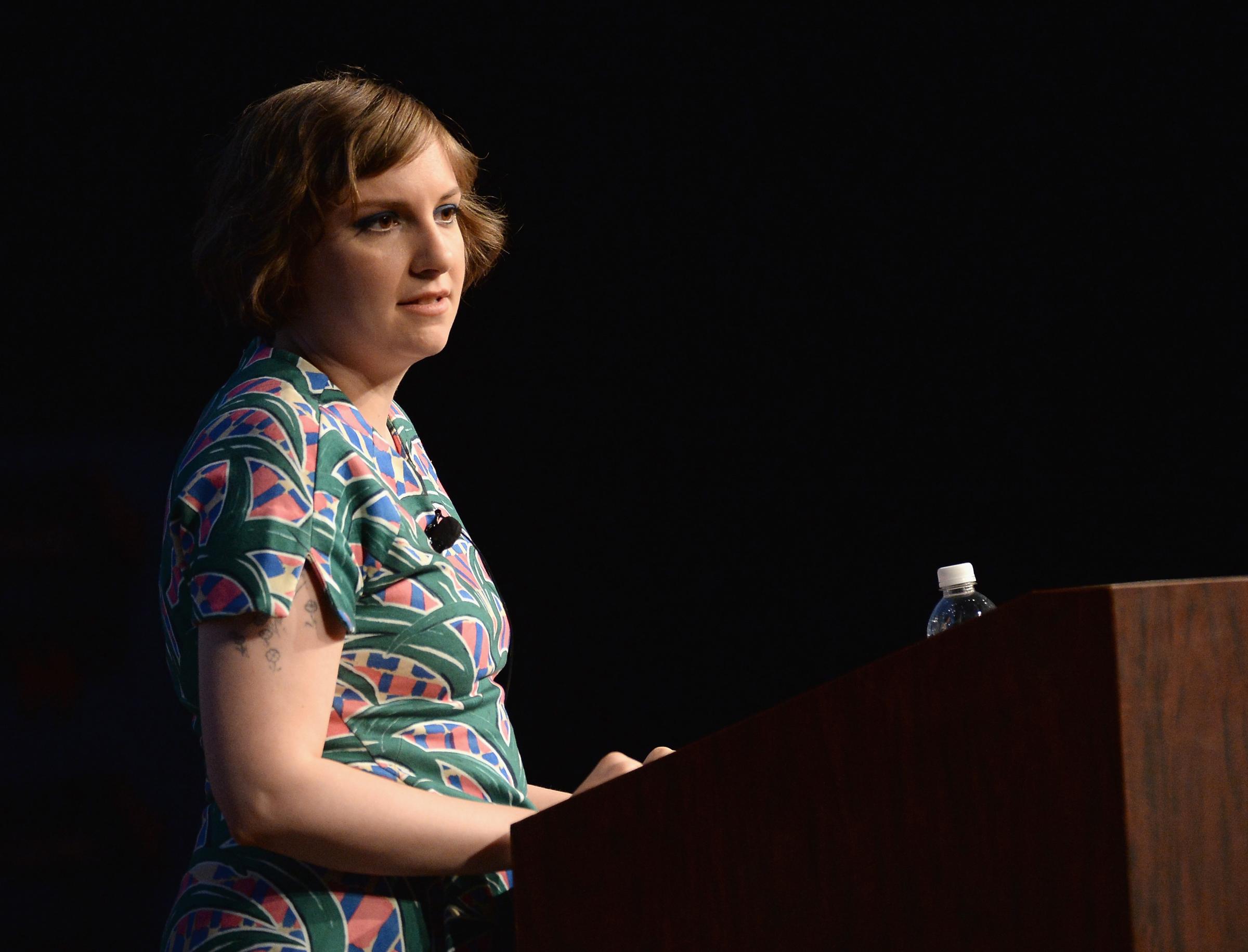Christina Hoff Sommers is a resident scholar at the American Enterprise Institute and author of several books, including The War Against Boys. She hosts a weekly video blog, The Factual Feminist.
Much of what we hear about the plight of American women is false. Some faux facts have been repeated so often they are almost beyond the reach of critical analysis. Though they are baseless, these canards have become the foundation of Congressional debates, the inspiration for new legislation and the focus of college programs. Here are five of the most popular myths that should be rejected by all who are genuinely committed to improving the circumstances of women:
MYTH 1: Women are half the world’s population, working two-thirds of the world’s working hours, receiving 10% of the world’s income, owning less than 1% of the world’s property.
FACTS: This injustice confection is routinely quoted by advocacy groups, the World Bank, Oxfam and the United Nations. It is sheer fabrication. More than 15 years ago, Sussex University experts on gender and development Sally Baden and Anne Marie Goetz, repudiated the claim: “The figure was made up by someone working at the UN because it seemed to her to represent the scale of gender-based inequality at the time.” But there is no evidence that it was ever accurate, and it certainly is not today.
Precise figures do not exist, but no serious economist believes women earn only 10% of the world’s income or own only 1% of property. As one critic noted in an excellent debunking in The Atlantic, “U.S. women alone earn 5.4 percent of world income today.” Moreover, in African countries, where women have made far less progress than their Western and Asian counterparts, Yale economist Cheryl Doss found female land ownership ranged from 11% in Senegal to 54% in Rwanda and Burundi. Doss warns that “using unsubstantiated statistics for advocacy is counterproductive.” Bad data not only undermine credibility, they obstruct progress by making it impossible to measure change.
MYTH 2: Between 100,000 and 300,000 girls are pressed into sexual slavery each year in the United States.
FACTS: This sensational claim is a favorite of politicians, celebrities and journalists. Ashton Kutcher and Demi Moore turned it into a cause célèbre. Both conservatives and liberal reformers deploy it. Former President Jimmy Carter recently said that the sexual enslavement of girls in the U.S. today is worse than American slavery in the 19th century.
The source for the figure is a 2001 report on child sexual exploitation by University of Pennsylvania sociologists Richard Estes and Neil Alan Weiner. But their 100,000–300,000 estimate referred to children at risk for exploitation—not actual victims. When three reporters from the Village Voice questioned Estes on the number of children who are abducted and pressed into sexual slavery each year, he replied, “We’re talking about a few hundred people.” And this number is likely to include a lot of boys: According to a 2008 census of underage prostitutes in New York City, nearly half turned out to be male. A few hundred children is still a few hundred too many, but they will not be helped by thousand-fold inflation of their numbers.
MYTH 3: In the United States, 22%–35% of women who visit hospital emergency rooms do so because of domestic violence.
FACTS: This claim has appeared in countless fact sheets, books and articles—for example, in the leading textbook on family violence, Domestic Violence Law, and in the Penguin Atlas of Women in the World. The Penguin Atlas uses the emergency room figure to justify placing the U.S. on par with Uganda and Haiti for intimate violence.
What is the provenance? The Atlas provides no primary source, but the editor of Domestic Violence Law cites a 1997 Justice Department study, as well as a 2009 post on the Centers for Disease Control website. But the Justice Department and the CDC are not referring to the 40 million women who annually visit emergency rooms, but to women, numbering about 550,000 annually, who come to emergency rooms “for violence-related injuries.” Of these, approximately 37% were attacked by intimates. So, it’s not the case that 22%-35% of women who visit emergency rooms are there for domestic violence. The correct figure is less than half of 1%.
MYTH 4: One in five in college women will be sexually assaulted.
FACTS: This incendiary figure is everywhere in the media today. Journalists, senators and even President Obama cite it routinely. Can it be true that the American college campus is one of the most dangerous places on earth for women?
The one-in-five figure is based on the Campus Sexual Assault Study, commissioned by the National Institute of Justice and conducted from 2005 to 2007. Two prominent criminologists, Northeastern University’s James Alan Fox and Mount Holyoke College’s Richard Moran, have noted its weaknesses:
“The estimated 19% sexual assault rate among college women is based on a survey at two large four-year universities, which might not accurately reflect our nation’s colleges overall. In addition, the survey had a large non-response rate, with the clear possibility that those who had been victimized were more apt to have completed the questionnaire, resulting in an inflated prevalence figure.”
Fox and Moran also point out that the study used an overly broad definition of sexual assault. Respondents were counted as sexual assault victims if they had been subject to “attempted forced kissing” or engaged in intimate encounters while intoxicated.
Defenders of the one-in-five figure will reply that the finding has been replicated by other studies. But these studies suffer from some or all of the same flaws. Campus sexual assault is a serious problem and will not be solved by statistical hijinks.
MYTH 5: Women earn 77 cents for every dollar a man earns—for doing the same work.
FACTS: No matter how many times this wage gap claim is decisively refuted by economists, it always comes back. The bottom line: the 23-cent gender pay gap is simply the difference between the average earnings of all men and women working full-time. It does not account for differences in occupations, positions, education, job tenure or hours worked per week. When such relevant factors are considered, the wage gap narrows to the point of vanishing.
Wage gap activists say women with identical backgrounds and jobs as men still earn less. But they always fail to take into account critical variables. Activist groups like the National Organization for Women have a fallback position: that women’s education and career choices are not truly free—they are driven by powerful sexist stereotypes. In this view, women’s tendency to retreat from the workplace to raise children or to enter fields like early childhood education and psychology, rather than better paying professions like petroleum engineering, is evidence of continued social coercion. Here is the problem: American women are among the best informed and most self-determining human beings in the world. To say that they are manipulated into their life choices by forces beyond their control is divorced from reality and demeaning, to boot.
MYTH 6: Men are the privileged sex
FACTS: Neither sex has the better deal. Modern life is a complicated mix of burdens and advantages—for each sex. Women are assumed to be the have-nots because a massive lobby devotes itself to proving Venus is worse off than Mars. Mars’ afflictions go unnoticed. So let’s consider a few of them.
When it comes to being crushed, mutilated, electrocuted, or mangled at work, men are at a distinct disadvantage. Most backbreaking, lethally dangerous jobs—roofer, logger, roustabout, and coal miner, to name a few—are done by men. The Labor Department reports that nearly 5,000 American workers die from workplace accidents each year. Ninety percent, more than 4,400, ARE male. We are often reminded that only 24 women are CEOs of the Fortune 500. But what about the Unfortunate 4,400?
Education beyond high school has been called “the passport to the American dream.” Increasingly, women have it and men don’t. From the earliest grades, our schools do a better job educating girls. Women now earn a majority of associate, bachelor, masters and doctoral degrees and their share of college degrees increases almost every year. The intersectional narrative tells us that males—especially those of the white variety–are the group most in need of atoning for their privileges. But recent government data show that Hispanic and Native American women are now more likely to attend college than white men.
Finally, consider the mother of all gender gaps: life expectancy. On average, women outlive men by about five years. The numbers are starker when you factor in race and ethnicity. In the U.S., Hispanic and Asian women can expect to live to 88 and 85, respectively. For white and black men, the ages are 76 and 72.
Today’s women’s lobby deploys a faulty logic: In cases where men are better off than women, that’s injustice. Where women are doing better—that’s life.
Final verdict: If Mars needs to check his privilege, then so does Venus.
Why do these reckless claims have so much appeal and staying power? For one thing, there is a lot of statistical illiteracy among journalists, feminist academics and political leaders. There is also an admirable human tendency to be protective of women—stories of female exploitation are readily believed, and vocal skeptics risk appearing indifferent to women’s suffering. Finally, armies of advocates depend on “killer stats” to galvanize their cause. But killer stats obliterate distinctions between more and less serious problems and send scarce resources in the wrong directions. They also promote bigotry. The idea that American men are annually enslaving more than 100,000 girls, sending millions of women to emergency rooms, sustaining a rape culture and cheating women out of their rightful salary creates rancor in true believers and disdain in those who would otherwise be sympathetic allies.
My advice to women’s advocates: Take back the truth.
Christina Hoff Sommers, a former philosophy professor, is a resident scholar at the American Enterprise Institute. She is the author of several books, including Who Stole Feminism and The War Against Boys, and is the host of a weekly video blog, The Factual Feminist. Follow her @CHSommers.
Read next: Why Pope Francis Won’t Let Women Become Priests
Here's What 20 Famous Women Think About Feminism





















More Must-Reads from TIME
- Donald Trump Is TIME's 2024 Person of the Year
- Why We Chose Trump as Person of the Year
- Is Intermittent Fasting Good or Bad for You?
- The 100 Must-Read Books of 2024
- The 20 Best Christmas TV Episodes
- Column: If Optimism Feels Ridiculous Now, Try Hope
- The Future of Climate Action Is Trade Policy
- Merle Bombardieri Is Helping People Make the Baby Decision
Contact us at letters@time.com